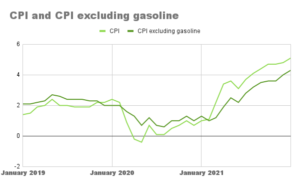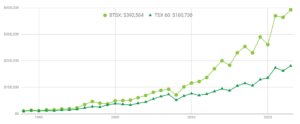In Canada, the mechanisms of individual investing have changed a great deal since I bought my first shares in 1995. Here is the way it used to go:
Back in the good old days
Acting upon usually unsolicited advice from an older family member a young person would contact a financial advisor. This would usually be someone associated with one of Canada’s Big 6 banks and probably the one the family had used for years if not generations. The advisor would welcome the new sheep to the fold and the gentle extraction of money would begin, frequently in the form of bank-owned mutual funds with MERs in the range of 2-3%.
These funds would not be index funds (at least not in name) but funds containing stocks selected by the bank’s group of crackerjack stock pickers. As you have seen previously in my writings they would most often underperform the market (https://us.spindices.com/documents/spiva/spiva-canada-scorecard-mid-year-2018.pdf).
This would continue iteration after iteration until either the poor pigeon woke up or the plucking process was completed. If the pigeons did squawk they would be fed a new line of mutual funds certified to be ‘safer’ or ‘new and improved’ or ‘the next great thing’, etc.
The Great Awakening of retail investors
Well, as is attributed (incorrectly, apparently) to Abraham Lincoln, you can’t fool all the people all the time, and eventually came the Great Awaking. I think this began with TIPS or Toronto Index Participation Shares, that started trading on the TSE (precursor to the TSX) in 1990. These shares, which tracked the TSE 35 and later the TSE 100 indices, proved to be popular. They were bought and sold on the exchange with no MER, only the cost of brokerage. What a deal!
Investors found that usually the index beat the majority of mutual funds; many found that out through printed material such as the Canadian MoneySaver, which began publication in 1981. The magazine was dedicated to providing independent financial advice to Canadians; as well, sources of financial data, usually newspapers, began printing the data that investors need to make decisions about investment selection.
Mutual funds still dominate
So, you would think that now mutual funds would be well on the road to extinction and index ETFs (the successors to TIPS) would be the main investment vehicle for individual Canadians. Not yet. The most recent statistics from the Investment Funds Institute of Canada tell us that Canadian mutual fund assets outweigh ETF assets by 1,565 Billion to 179 Billion (<https://www.ific.ca/wp-content/uploads/2019/05/News-Release-April-Monthly-Statistics-Mutual-Funds-and-ETFs-May-22-2019.pdf/22417/>). However, ETF sales outpaced mutual fund sales for the first time in 2018. (<https/::www.moneysense.ca:save:etf-sales-grow-but-mutual-funds-still-rule:>) Thus, it is a process and processes take time.
The modern era of choice
Now what happens when a young person seeks to invest? It is to be hoped that the process goes something like this: After examining the options available, a decision is made to either invest on one’s one, or with a financial advisor. The financial advisor can range from a human, either bank-based or not, to a computer (‘robo-investing’), to an on-line brokerage, or, perhaps, some mixture of these options. Having been made aware of the importance of fees, the investor will strive to keep them at or below 0.5%. Advisors, in whatever form they may take, have the principal role of advising the investor with regards to portfolio management, rebalancing, tax implications, etc. rather than stock selection, although they might also provide a source of data.
There is more to building wealth than good investments
Is this the full story of 21st Century investing in Canada? Not quite. There remain some tasks that investors need that can’t be fully performed by robo-advisors, et al. Almost all investors will need sometime in their investing career in-depth advice on tax-planning, estate-planning, retirement-planning, and probably other more personal needs.
Here is an example. During the 2008 stock market meltdown our ShareClub found itself with a large number of new members. These folks weren’t novice investors, but they had been jolted by the precipitous drop in their total net worth. Either they invested through on-line brokerages or their relationship with their human advisors wasn’t strong enough, but they told me in private discussions that, in essence, what they were looking for was some hand-holding and acknowledgment that their approach was correct and that they were just going through a rough patch. The ShareClub is a very good place to get reinforcement of this type and I think there will be a continuing need for this going forward, whether from family, friends, groups like the ShareClub, or paid advisors.
Final thoughts
To summarize, Canadian individual investing has come a long way in a relative short time, aided by technology and consumer awareness. Those of us that work in the area of financial literacy realize, however, that though much has been achieved, much is left to do. It is my view that technology will only take us so far, and there will always be a need for the honest and reassuring human element.



